Gyeran Bokkeumbap is a fast and easy Korean Egg Fried Rice. Salty bacon and soft scrambled eggs, mixed into flavorful fried rice - this is your new bacon and eggs obsession!

Save This Recipe! 💌
When I was young, and it was just the two of us, my mom would make effortless Korean food for dinner. Like this delicious Egg Fried Rice, or Gyeran Bokkeumbap, in Korean. American food, with all of its ingredients and preparation time, was for when the men were home. Withhold your shock - this was the 1970's.
When it was just us girls, she would usually fry up some cold rice, add an egg, some meat, and some kimchi, serve it with an easy korean pancake and call it dinner. At the time I felt cheated out of a home cooked meal, but now I see that was exactly what she was giving to me. It wasn't just fried rice with egg. It was filling food, prepared simply, the way she had it when she grew up.
Jump to:
What is Gyeran Bokkeumbap?
Foreign language extra credit: For those of you not earning lingots on Duolingo, Gyeran is the Korean word for egg, bokkeum means to sauté or stir fry, and bap is rice. All together, that gives you egg fried rice! It is a common and traditional Korean dish that is quick and easy to make, and so tasty.
Koreans don't really have foods that are only thought of as breakfast, lunch, or dinner foods. Gyeran Bokkeumbap can be eaten at any time of day and any day of the week. Me? I like mine for breakfast. Egg fried rice is the kind of dish that gets my day off to a great start! This is bacon and eggs taken in a totally new direction!
My mom would usually serve my rice with cold ham, which played well with hot rice and some spicy kimchi. As for me, I used to make a variation of this for my kids' lunches with pieces of smoked sausage and a drizzle of fragrant sesame oil. For this version, I decided to keep it simple, and make it for breakfast, with bacon and eggs, because I'm the Brunch Lady.
❤️ What you'll love about this Bacon and Egg Fried Rice
- Inexpensive - For the cost of a couple of cups of rice and a few eggs, you can have an amazing, filling meal that will feed a family of four. Or two really hungry people! With a basic egg fried rice recipe!
- Easy - There is no difficult prep or complicated instructions. This Korean fried rice cooks all in one pan!
- Quick - Since you use leftover cold rice, you'll spend maximum 15 minutes whipping this up in the morning!
- Versatile - You can add whatever you want to your fried rice and eat it for whatever meal you like. No rules 🤟
- Time saving - You can make this entire thing ahead and just reheat it when you're ready to eat!
Ingredients
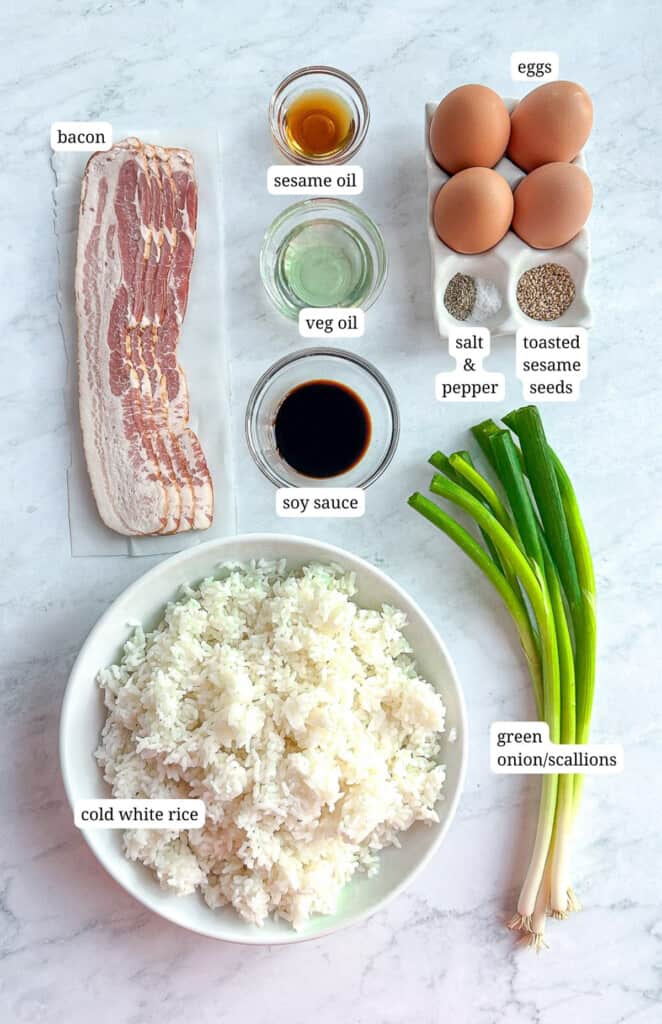
Ingredient notes
Cooked white rice Whether you use a rice cooker, a pot on the stove, or microwaveable rice bowl - it's all good. I prefer short grain, or sushi rice for the stickiness and texture, but jasmine rice works well too. Whatever you have, as long as you don't use instant rice, which is just dehydrated rice, and has a broken texture. Please, just no.
Day old, cold rice is best because it is drier and so will better stir fry and absorb the flavors we are adding, but of you want to make this the same day, spread you cooked rice on a parchment lined baking sheet and let it cool in the refrigerator for at least an hour.
How to cook egg fried rice
First cook your rice - Cook your rice according to the package or rice cooker directions. Let cool and then refrigerate at least 1 hour, or up to one day.

Step 1: Place a wok over high heat, or a nonstick pan over medium-high heat and add one tablespoon of vegetable oil. Add bacon and cook until just getting brown on the edges. Remove to a bowl and pour off the grease.

Step 2: Add 1 tablespoon of the bacon grease, or a tablespoon of vegetable oil, to the wok or pan. Add whisked eggs and scramble until just set, but not completely cooked. They will continue to cook when added to the rice. Set aside with the bacon.
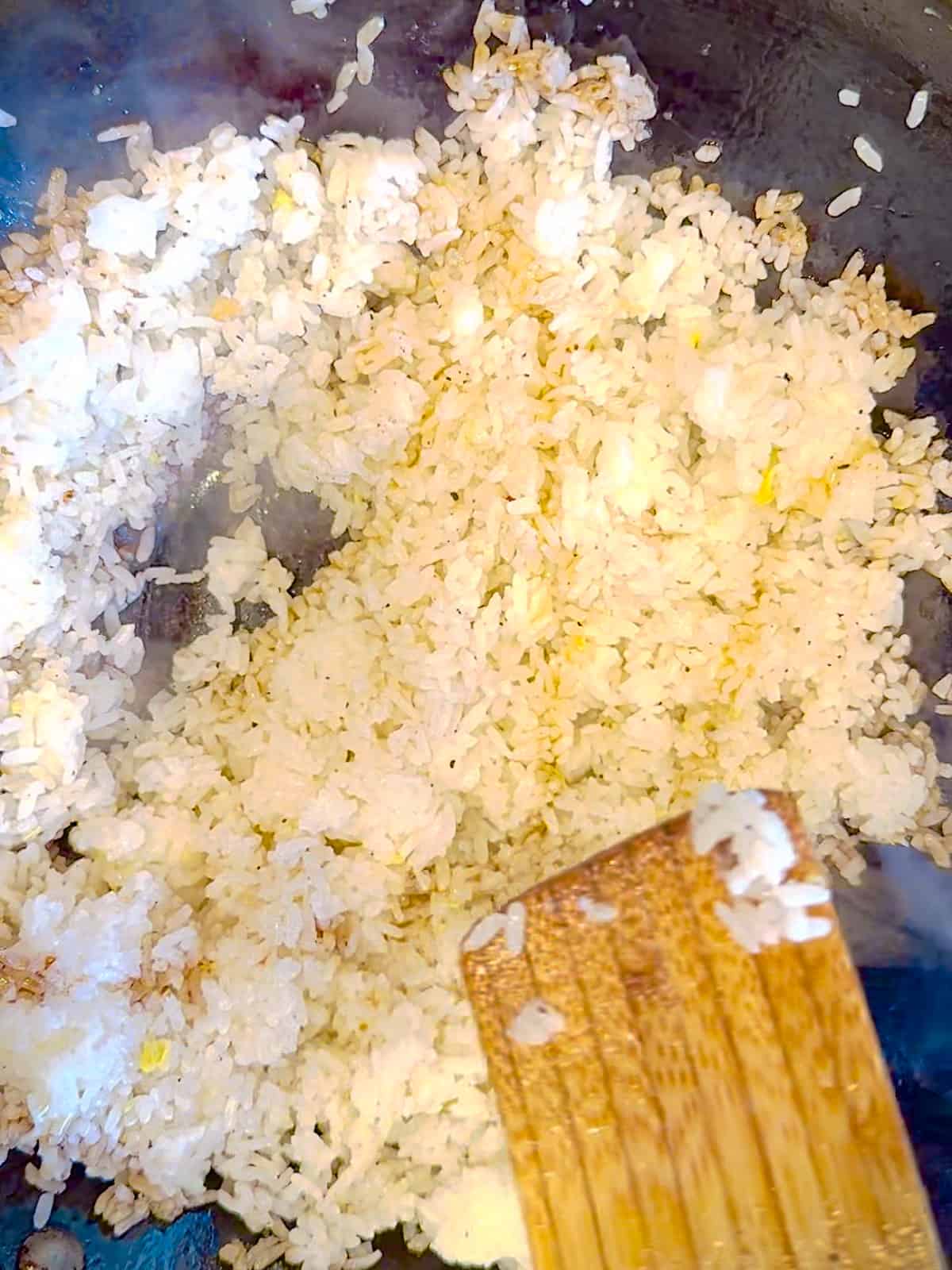
Step 1: Add remaining bacon grease (about 2 tablespoons) or more vegetable oil to the pan. Add rice and cook for 2 to 3 minutes, breaking up any large clumps, until you get a bit of crispiness and just a bit of color on the bottom of the rice. Season with about ½ teaspoon of salt and some black pepper and toss to distribute through the rice.
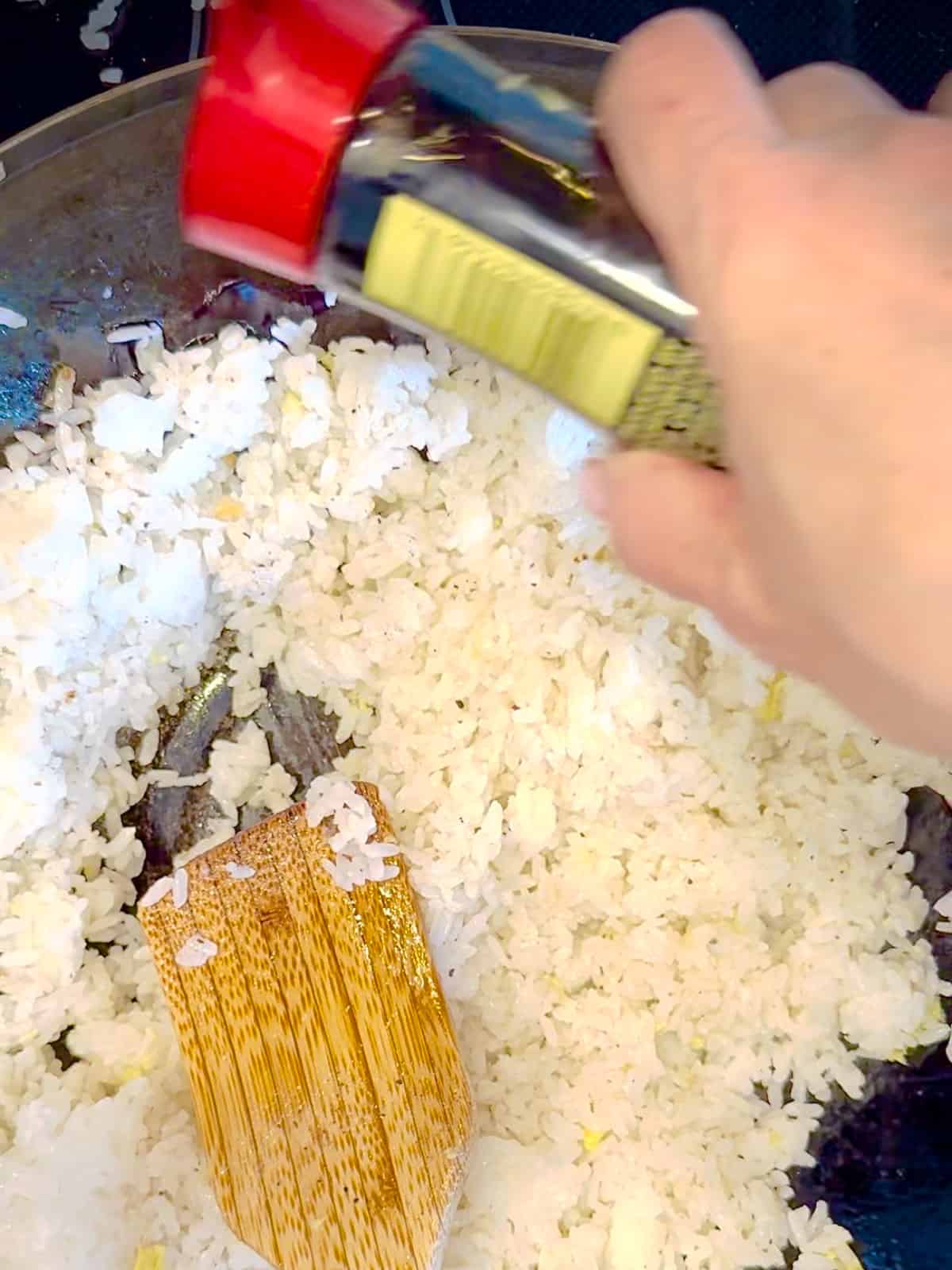
Step 2: Drizzle soy sauce along the outside of the pan, allowing it to cook on the side of the pan and run underneath the rice.
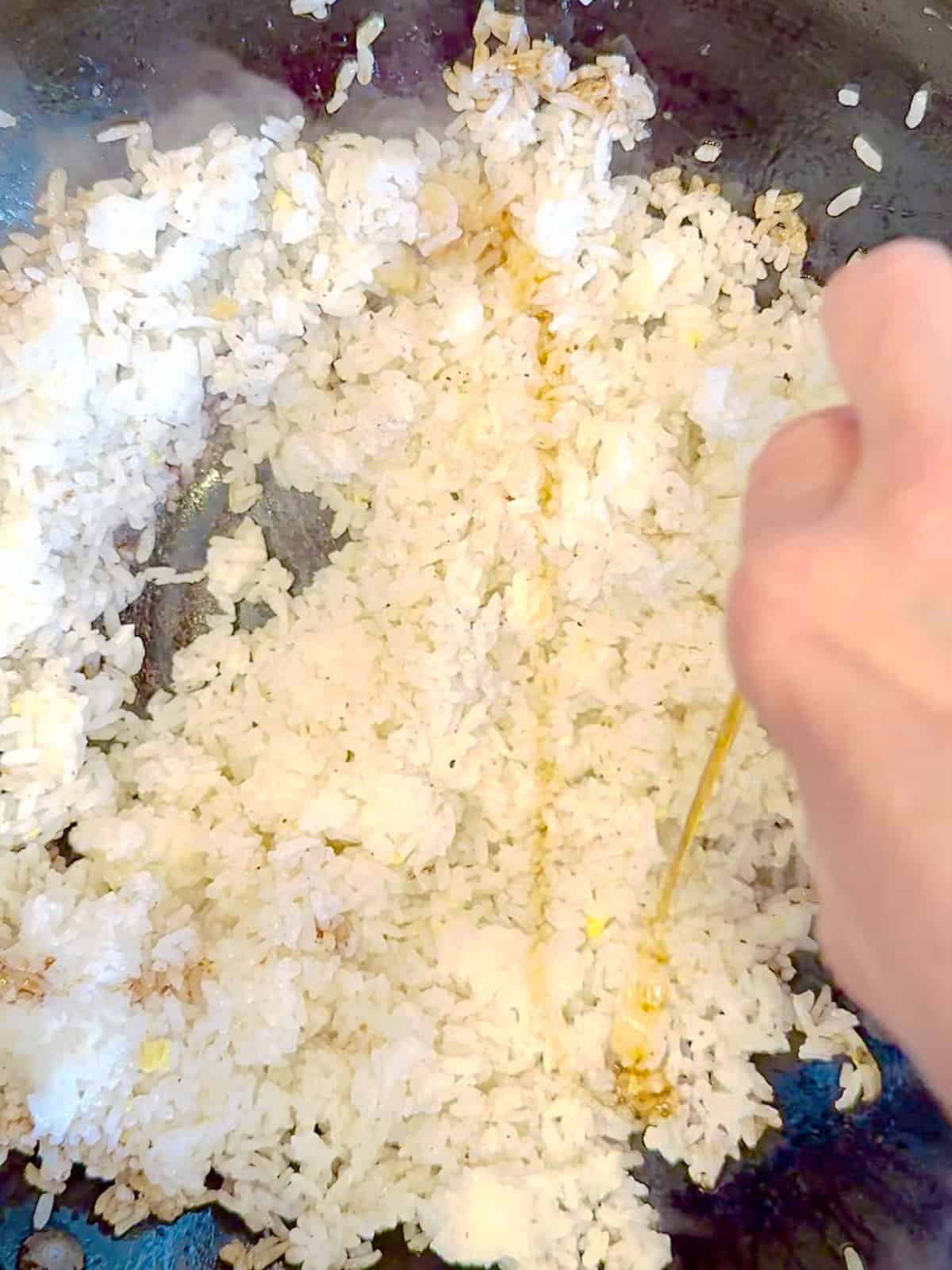
Step 1: Drizzle the sesame oil on top of the rice. Stir to evenly distribute both into the rice.
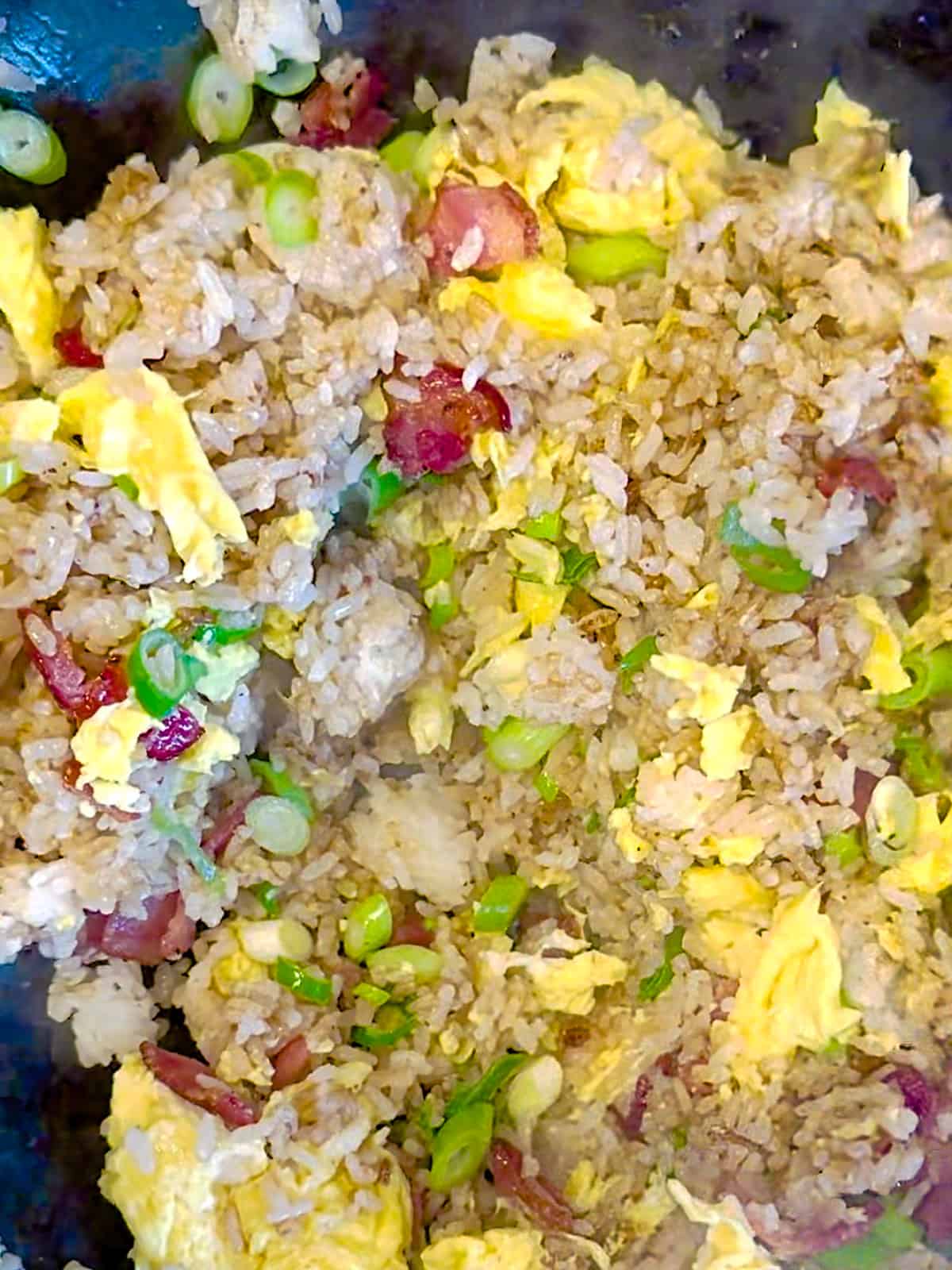
Step 2: Turn off heat and add eggs and the bacon back to pan.Toss in all of your green onions too. Fold in until everything is warmed through. Sprinkle with sesame seeds, saving some to garnish.

Hot tip: Feeling fully decadent? Pop a fried egg on top for egg on egg fried rice. It's a vibe and I'm here for it!
Egg Fried Rice FAQs
Cooked rice should be refrigerated within 2 hours. Store in an airtight container in the refrigerator for up to 4 days.
Place desired portion of rice in a microwaveable container, sprinkle lightly with water, cover loosely, and heat for 30 seconds. Stir, and continue heating and stirring in 30 second increments until hot, or until internal temperature is 165°F. You can also reheat in a pan on the stove over medium heat.
If you have a gluten allergy, you can still make this dish, but some soy sauce contains wheat products. You can substitute the soy sauce with tamari. It isn't Korean, but the flavor is similar.
You can. If you don't have time, or you forgot to cook rice a day ahead, you can start it an hour or two ahead. Cook the rice as directed on the package and then spread it out in a single layer on a sheet pan. Allow to cool and dry out in the refrigerator for about an hour and then proceed.
You sure can! Check the labels to confirm, but almost all soy sauces are vegan. Instead of using eggs, you can crumble and then stir-fry firm tofu.

Looking for more Korean influenced recipes?
📖 Recipe

Korean Egg Fried Rice (Gyeran Bokkeumbap)
Equipment
Ingredients
- 4 strips bacon preferably thick cut, diced
- 4 large eggs whisked
- 2 tbs vegetable oil or bacon fat
- 4 cups cooked rice
- Kosher salt and black pepper to taste
- 2 tbs soy sauce
- 1 tbs sesame oil
- 4 green onions
- Sesame seeds for garnish
- Chives for garnish (optional)
Instructions
- Cook rice by your favorite method and let cool. Refrigerate overnight or spread out onto a parchment paper lined large baking sheet and allow to cool for at least an hour.
- Slice green onions into ¼ inch pieces and set aside.
- Set wok or large nonstick skillet over high heat. Swirl pan with 1 tablespoon vegetable oil and add bacon. Cook until just getting brown on the edges. Remove bacon to a bowl and pour off bacon grease.
- Add 1 tablespoon of the bacon grease, or a tablespoon of vegetable oil, to the wok or pan. Add eggs and scramble until just set, but not completely cooked. They will continue to cook when added to the rice. Set aside with the bacon.
- Add remaining bacon grease (about 2 tablespoons) or more vegetable oil, to the pan. Add rice and cook for 2 to 3 minutes, breaking up any large clumps, until you get a bit of crispiness and just a bit of color on the bottom of the rice. Season with about ½ teaspoon of salt and some black pepper and toss to distribute through the rice.
- Drizzle soy sauce along the outside of the pan, allowing it to cook on the side of the pan and run underneath the rice. Drizzle the sesame oil on top of the rice. Stir to evenly distribute both into the rice.
- Turn off heat and add eggs and the bacon back to pan. Toss in all of your green onions, saving some to garnish if you aren't using chives. Fold everything in until warmed through. Sprinkle with sesame seeds, saving some to garnish.
- Serve, garnished with more sesame seeds and chopped chives, if desired. Pop an egg on top if you're feeling decadent.








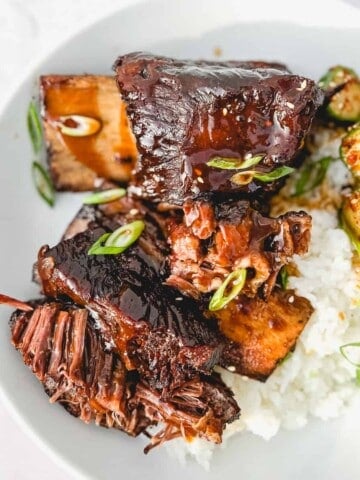
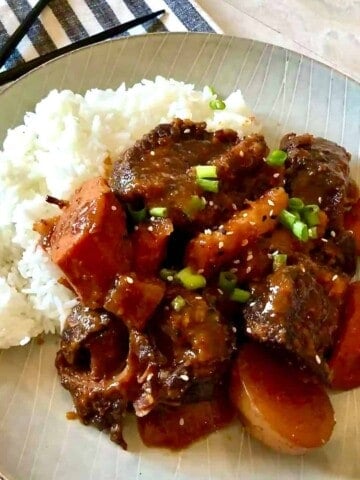
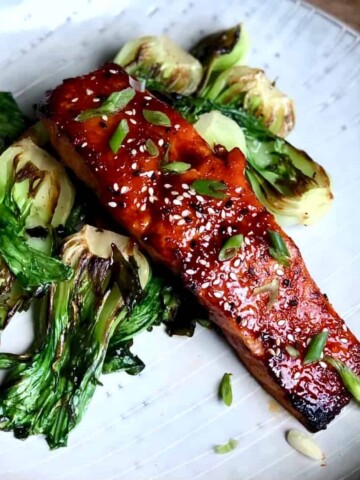
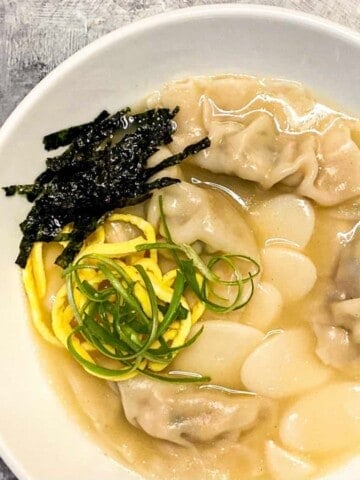


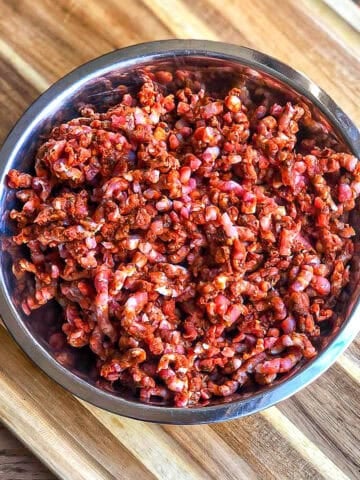

Nat says
hi there are you using toasted or non toasted sesame oil in the recipe? thanks!
Cynthia Christensen says
I always prefer to use toasted sesame oil because it has a much richer flavor. However, I realize that most American grocery stores only sell one kind of sesame oil, so it’s really not a dealbreaker. You can use either.